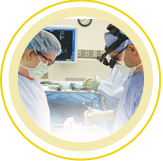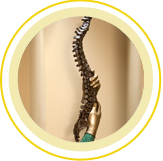An abnormal curve of the spine, resembling an “S” or “C” may be scoliosis, a common musculoskeletal disorder. Scoliosis is especially common in adolescents, but can affect adults as well, often for varying reasons.
Who is at risk of developing scoliosis?

There isn’t a known cause for many types of scoliosis. Some theories suggest that scoliosis:
- is hereditary
- is linked to growth spurts
- can be caused by structural changes, for example if one leg is longer than the other, or central nervous system changes
- can be caused by problems with posture and body symmetry.
Young children
There isn’t a known cause of infantile scoliosis, scoliosis that is diagnosed before the child is 3 years old. Juvenile scoliosis is diagnosed between the ages of 4 and 10. Some patients with juvenile scoliosis have an underlying spinal condition, but the majority do not. Young children with scoliosis frequently need surgical treatment.
Adolescents
Roughly 10% of children between the ages of 10 and 15 years old will be diagnosed with scoliosis, stemming from periods of rapid growth during this age. Girls at this age are 10 times more likely to have scoliosis than boys.
Adult
Scoliosis diagnosed in adults can be a result of injury, muscle deformities, or due to degeneration of the spine. Degenerative scoliosis is more common for women, after the age of 40, and is due to deterioration of the spine that is often related to osteoporosis.
What are the signs of scoliosis?
Scoliosis may not be obvious until the spine is severely curved and is often painless, so it is recommended that children be screened for scoliosis at least twice – for girls during the ages between 10 and 12, and for boys during the ages of 13 and 14.
There are a few changes to be aware of that could signal scoliosis:
- A shoulder or shoulder blade, or your ribs, hips, or waist could be uneven.
- Your ribs may stick up when bending forward.
- Your waist or head may not be centered.
- Back pain could develop as scoliosis worsens.
How is scoliosis diagnosed?
A doctor will do a full examination of your back, chest, feet, legs, and pelvis to look for signs of a curvature. If scoliosis is diagnosed and treatment is needed, physical therapy, bracing, or surgery may be recommended depending on the cause and severity of the condition.
There is a new app developed by orthopedic specialists that can help parents check their child for signs of scoliosis. The app is called SpineScreen and is available on the App Store and Google Play store. Early detection is helpful for treating scoliosis, so this app is a quick, convenient way for parents to monitor any changes in a child’s spine.
For treatment options for scoliosis, schedule an appointment with Dr. Cohen, Dr. Torrealba, or Dr. Saullo at the Spine & Scoliosis Specialists. Call 336.333.6306 or fill out our online appointment request.



